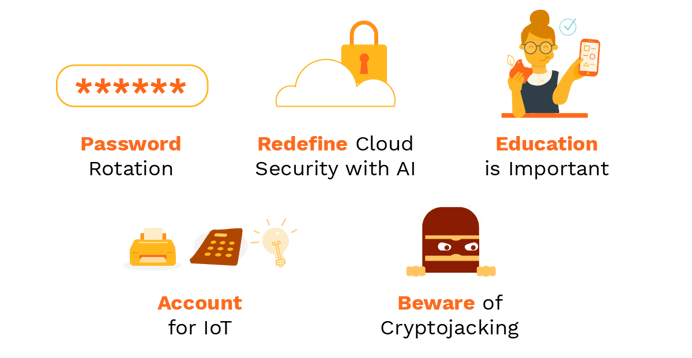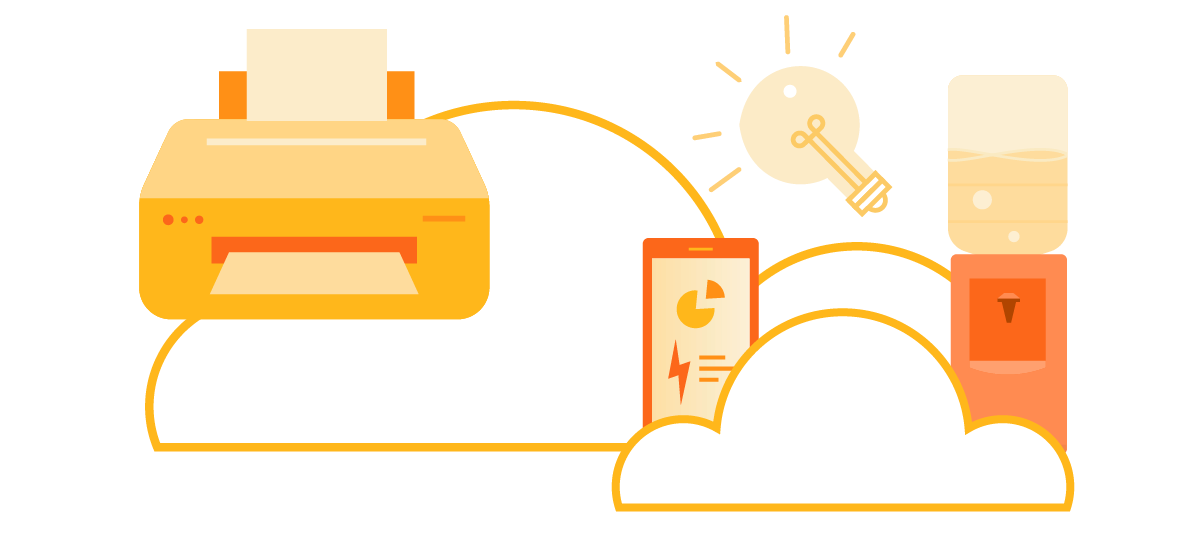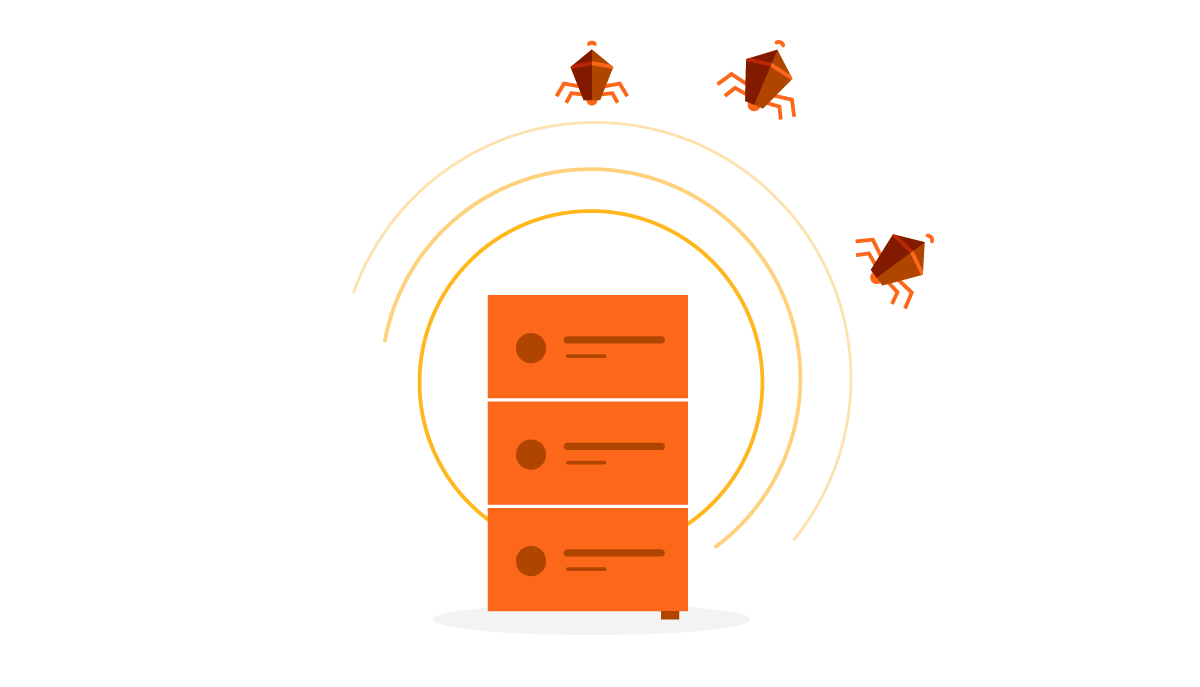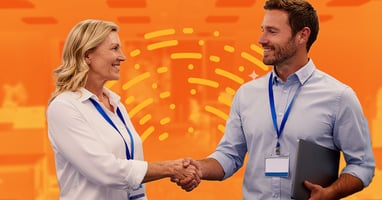Having a strategy is always important. A proper strategy when looking to plan for the future of your company and your team is crucial in order to have the best results. When it comes to cybersecurity, it is no different. If you are expecting your cybersecurity to be strong, then you already know you must plan and strategize the best solutions to make sure it’s capable and ready for any potential threats. Your security strategy may be solid, but there are some loose ends to consider when perfecting it. So, how do you approach tying up those loose ends and producing a strategy that takes into consideration all aspects of the company? Here are some great ways to amplify the capabilities and strengths of your security strategy:

1. Password Rotation
Passwords, as you know, are extremely important when it comes to cybersecurity. Asides from the standard “having a strong and robust password” you were taught in school, there are some other things to consider when it comes to password strength and security. Old passwords have a tendency of being easier to obtain and can eventually be cracked, guessed, or acquired by unauthorized individuals. In order to prevent this, having a password rotation can prevent these intrusions by having the password last no longer than a month at a time. This gives an expiration date on the passwords used to access data, accounts, etc. so should a password be taken, there is a limited time in which a person can access information. Going even further, for extremely sensitive information using one time passwords that are changed daily can further enhance the cybersecurity of the office.
2. Account for IoT
Allowing for IoT devices is a fantastic way to improve the quality of your worker's lives as well as optimize your workflows to remain efficient. Everything from thermostats, printers, fans, fridges and more belong to the IoT category- as long as they are connected to a network. These smart objects being connected to your network bring many great things to your office and help with uptime. IoT has become a staple in both the office and the home. However, it’s because of its commonplace that this is a great exploit for hackers and threats to enter your office. Being connected to a network and to your office may make work easier, but it also leaves another opening for potential threats to breach their way inside. Make sure that the IoT devices you utilize have good security software and make sure to account for them in your cybersecurity strategy. Emphasize that IoT can be a central point that a threat can grow and harm your company. In order to help mitigate the spread of any damage, only use IoT device you know are 100% secure throughout your entire network. It may also be beneficial to remove some IoT devices that don’t have much purpose in your office as this can save costs and help your security become tighter. Does your company really need that internet capable thermostat or can it survive with a basic one? IoT is great for many things but aligning your IT strategy to account for its shortcomings and cost will allow your company to save money and drive innovation.

3. Redefine Cloud Security with AI
The cloud is an important part of any office and business, it is the next step in office technology and you would be hard pressed to find any modern office not using the cloud in their day to day operations. Cloud technology is easy to implement and tons of different companies provide it to offices across the globe. With all its great benefits, this does not mean that it is impervious to cyber attacks and other various cyber threats. Thus, it is important to redefine what cloud security means to your office. New automated programs and AI technology such as intelligent bots that recognize unusual activity are a necessary component when examining cybersecurity strategy. AI can strengthen data security and automate many of the processes to create a web of proactive defense around your data. As important as it is to embrace new innovations that cloud technology has to offer, it is also important to embrace AI and use it as a way to enhance your network’s cybersecurity around the cloud. Data theft is an increasingly troublesome worry that many offices have, combat it by utilizing AI.
4. Education is Important
Even with all the proactive security tools at your disposal, nothing can account for human error- except for humans themselves. We like to think that we would never make a mistake or never let something get the better of us, but the truth is that it’s inevitable to happen. Even as an IT professional it is hard to account for human error because it is impossible to set up humans as well oiled machines or proactive software. Because of these faults that we have, it is extremely important to foster a security culture within the workplace. Phishing, hacking, and exploiting employees are becoming an increasingly effective way for security breaches to occur, these bypass the security countermeasures you already placed. These types of intrusions prey on human weakness and the best way to combat this is to properly educate employees and other staff on security training. Your IT department shouldn’t keep all the security knowledge to themselves, for as we know, knowledge truly is power. Educating employees around the security protocols and potential threats they may face will go a long way in strengthening your cybersecurity strategy and creating an additional, viable layer of support and strength around your company. Investing in security training is a top priority for any successfully strong security strategy.

5. Beware of Cryptojacking
Cryptojacking is becoming a rampant threat and a hot topic in cybersecurity. The rise of cryptocurrencies has seen lots of people using unethical and unauthorized means of mining for coins. Cryptojacking is when a malicious program inserts cryptomining code or programs that essentially use a workplace computer to mine cryptocurrency. Essentially, it uses your office computers to do the heavy lifting of mining, costing expenses in utilities and potentially hardware damages due to its demanding nature.
Training staff to recognize security threats is the greatest way to combat this effectively. Neglecting staff training is the primary cause for cryptojacking so education is the best way to enhance your cyber security strategy. It is also important to have scanning tools like anti-mining programs and extensions to recognize when these mining codes have been put onto the computers. Optimizing web filtering will also help in deterring these issues. Cryptojacking is still new and expected to be a persistent problem in 2019, do not neglect your security strategy by failing to address this serious issue.

Nothing can be truly flawless, not even the strongest security strategy. As the old saying goes, “plan for the worst but hope for the best”. You need to prepare for the possibility that cybersecurity compromises can occur to your company and harm the office workflow. Have a plan in place and ready for action when this occurs. Strategize and consider the options and decisions you and your employees will have to make in order to halt the damage and repair what is broken. Even though the emphasis should always be a proactive defense, it is also good to have a strong reactive defense just in case something happens that is beyond the control or scope of your cybersecurity strategy. After all, better to have a backup and never use it than to need it and not have one at all.
Security always changes as technology is ever evolving, make sure that you use these 5 tips to keep yourself, your team, and your network up to date on the best strategies against security threats. Remember that security, just like anything else, requires a good plan in order to be effective. A good security strategy will save your company from potentially disastrous scenarios and make sure that it is running smoothly like a well-oiled machine.
Categories: Security, Cyber Security, IT Management











